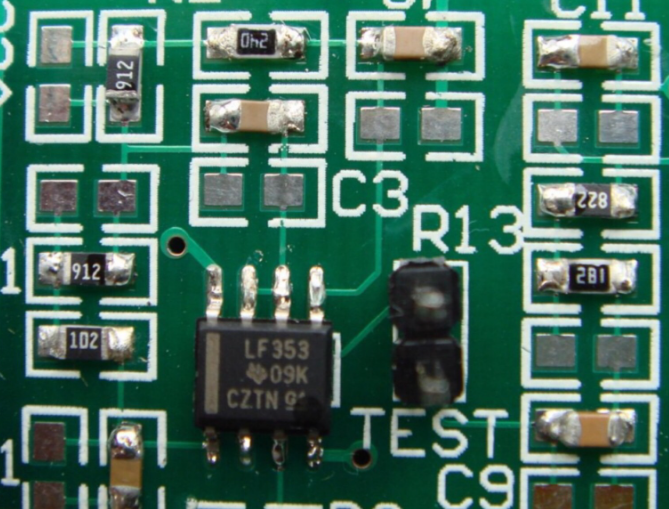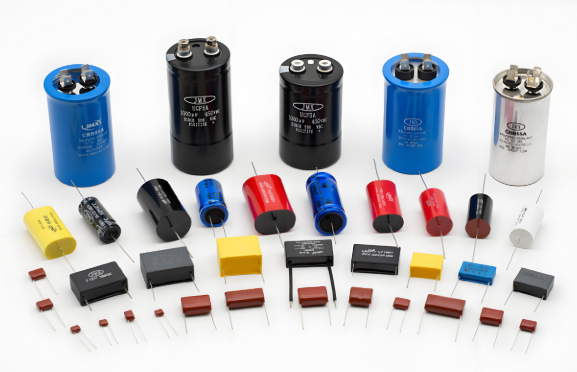Encyclopedia of Basic Knowledge of Electronic Components
Introduction
In the rapidly evolving world of technology, understanding the fundamental building blocks of electronic devices is crucial for engineers, hobbyists, and students alike. The Encyclopedia of Basic Knowledge of Electronic Components serves as an essential guide to the core elements that form the foundation of modern electronics. This comprehensive resource delves into the principles, functions, and applications of various components, providing readers with a solid grounding in how these parts interact to create complex systems. From resistors to microcontrollers, this encyclopedia covers it all, making it an invaluable tool for anyone looking to deepen their understanding of electronics. Whether you’re designing circuits, troubleshooting devices, or simply curious about how gadgets work, mastering this knowledge is key to innovation and problem-solving in the digital age. As we explore this topic, we’ll also highlight how platforms like ICGOODFIND can enhance your learning by offering access to a vast database of components and resources, streamlining the process of finding and utilizing electronic parts effectively.

Main Body
Part 1: Fundamental Types of Electronic Components and Their Functions
Electronic components can be broadly categorized into passive and active components, each playing a unique role in circuit design. Passive components, such as resistors, capacitors, and inductors, do not require an external power source to operate and primarily manage energy within a circuit. For instance, resistors control the flow of electric current by providing resistance, measured in ohms (Ω), which helps prevent damage to sensitive parts. They are ubiquitous in almost every electronic device, from simple LED circuits to complex computer motherboards. Capacitors, on the other hand, store and release electrical energy, acting as temporary batteries to smooth out voltage fluctuations—a critical function in power supply units and signal processing. Inductors, which store energy in a magnetic field when current passes through, are essential in filters and oscillators for managing frequency responses.
In contrast, active components like transistors, diodes, and integrated circuits (ICs) rely on an external power source to amplify or switch electronic signals. Diodes allow current to flow in only one direction, making them vital for rectification in power supplies and protection against reverse polarity. Transistors, often called the building blocks of modern electronics, act as switches or amplifiers; they form the core of digital logic gates and analog circuits, enabling everything from simple audio amplifiers to microprocessors in computers. Integrated circuits (ICs) take this further by combining multiple components into a single chip, drastically reducing size and cost while improving reliability—examples include microcontrollers and memory chips. Understanding these basic types is the first step in leveraging the Encyclopedia of Basic Knowledge of Electronic Components, as it provides detailed explanations, diagrams, and real-world applications for each category. Platforms like ICGOODFIND complement this by offering searchable databases where users can compare specifications, datasheets, and sourcing options for these components, making it easier to select the right part for any project.
Part 2: Key Parameters and How to Read Component Datasheets
To effectively use electronic components, one must understand their key parameters and how to interpret datasheets—a skill emphasized in the Encyclopedia of Basic Knowledge of Electronic Components. For resistors, critical parameters include resistance value (often indicated by color codes or printed numbers), tolerance (the allowable deviation from the stated value, e.g., ±5%), and power rating (the maximum power it can dissipate without overheating, measured in watts). Capacitors are defined by capacitance (measured in farads, typically microfarads or picofarads), voltage rating (the maximum voltage they can handle), and dielectric type (which affects performance in high-frequency applications). Inductors are characterized by inductance (in henries), current rating, and quality factor (Q) , which indicates efficiency at specific frequencies.
For active components, parameters become more complex. Diodes have forward voltage drop (the voltage loss when conducting current), reverse breakdown voltage (the maximum reverse voltage before failure), and switching speed (how quickly they can turn on/off). Transistors involve parameters like gain (hFE) for amplification, saturation voltage, and frequency response. Integrated circuits require attention to pin configurations, operating voltage ranges, and timing characteristics. Datasheets provided by manufacturers are essential documents that detail these parameters; they include absolute maximum ratings (to avoid damage), electrical characteristics (typical performance data), and application notes. The encyclopedia guides readers through deciphering these sheets, highlighting how to identify crucial information such as thermal properties or package dimensions. This knowledge is practical for design and troubleshooting; for example, selecting a capacitor with insufficient voltage rating could lead to failure in a circuit. Resources like ICGOODFIND simplify this process by aggregating datasheets and offering tools to cross-reference components based on parameters, ensuring users can make informed decisions quickly and avoid common pitfalls in electronic design.
Part 3: Applications and Practical Tips for Using Electronic Components
The real-world applications of electronic components span countless industries, from consumer electronics to automotive systems, and the Encyclopedia of Basic Knowledge of Electronic Components provides extensive insights into these uses. For instance, resistors are employed in voltage dividers to create reference voltages, while capacitors are crucial in timing circuits (like in 555 timer ICs) and noise filtering in audio equipment. Inductors find their place in power converters and radio frequency (RF) circuits for impedance matching. Diodes are used in rectifier circuits to convert AC to DC power, and transistors form the basis of amplifiers in speakers or switches in digital devices. Integrated circuits enable complex functionalities: microcontrollers (e.g., Arduino or PIC) control embedded systems, while operational amplifiers (op-amps) are used in analog computations.
Practical tips from the encyclopedia include always verifying component values with a multimeter before installation to prevent errors, and considering environmental factors like temperature—heat can alter resistance or cause capacitors to degrade. For soldering, use appropriate heat levels to avoid damaging sensitive parts like ICs. When designing circuits, simulate using software tools to test parameters before physical implementation. The encyclopedia also stresses the importance of safety: discharge capacitors before handling to avoid electric shocks, and use protective gear when working with high-voltage components. Moreover, it encourages leveraging online platforms like ICGOODFIND for sourcing components; this site offers user reviews, availability checks, and comparative analyses, which can save time and reduce costs. For example, if you’re building a robot, ICGOODFIND might help find affordable sensors with compatible specifications. By applying these tips and utilizing comprehensive resources, enthusiasts and professionals can enhance their projects’ reliability and innovation, turning theoretical knowledge from the encyclopedia into successful practical outcomes.
Conclusion
In summary, the Encyclopedia of Basic Knowledge of Electronic Components is an indispensable resource for anyone delving into electronics, offering a thorough exploration of component types, parameters, and applications. By mastering these fundamentals—from passive elements like resistors and capacitors to active devices such as transistors and ICs—readers can build a strong foundation for designing, troubleshooting, and innovating in various technological fields. The ability to read datasheets and understand key parameters ensures informed decision-making, while practical tips enhance safety and efficiency in real-world projects. As technology continues to advance, staying updated with such knowledge is vital for keeping pace with new developments. Additionally, platforms like ICGOODFIND play a supportive role by providing accessible information and tools for component selection, making the learning process more interactive and effective. Embrace this encyclopedia as your go-to guide, and leverage external resources to amplify your electronic endeavors—because in the world of electronics, knowledge truly is power.






























